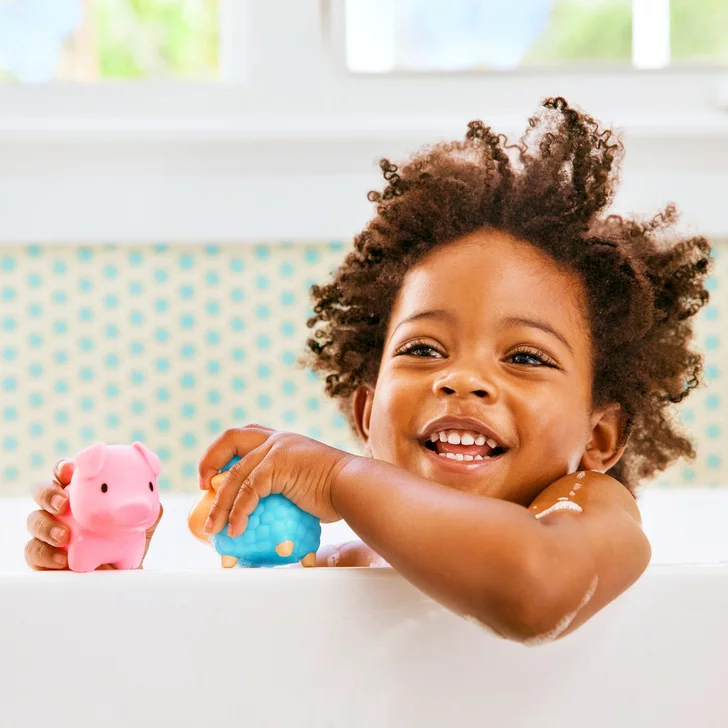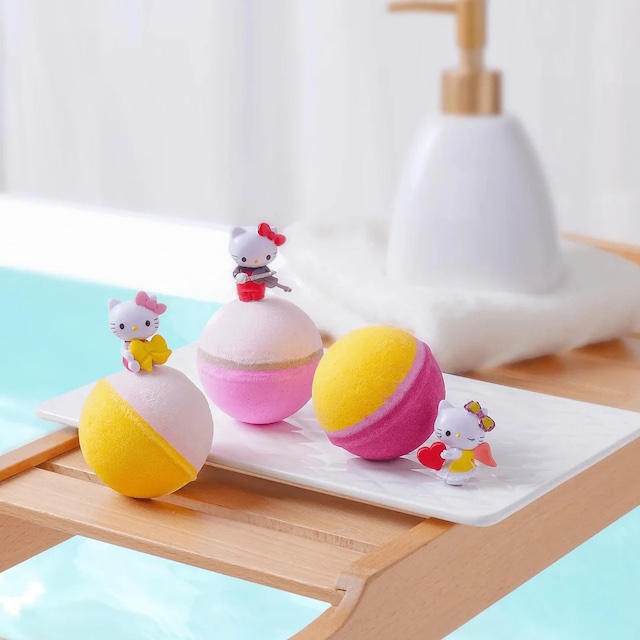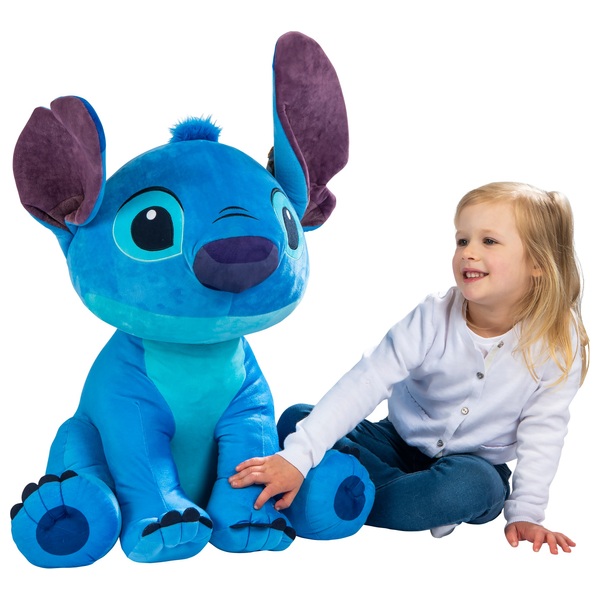The Benefits of Bath Time Play
Bath time isn’t just about getting clean. It’s a golden opportunity for play that helps children grow. Engaging with floating bath toys during bath time can boost their development in surprising ways.
Enhancing Motor Skills
Handling floating bath toys is a fun way for children to develop motor skills. These toys often require grasping, squeezing, and coordinated movements. For instance, reaching out and catching a toy floating by can enhance hand-eye coordination. Squeezing squirt toys helps develop the small muscles in their hands. Motor skill development is crucial at a young age, and floating bath toys make it enjoyable.
Stimulating Creativity and Imagination
Floating bath toys not only delight with their bright colors and fun shapes but also spark the imagination. As children invent scenarios for their rubber ducks and characters, they engage in creative storytelling. They learn to role-play and express themselves in countless ways. This form of play encourages thinking outside of the box and problem-solving. It’s bath time fun that sets a foundation for creativity and imagination.
Types of Floating Bath Toys
When it comes to bath time, a variety of floating bath toys can make the experience more delightful for children. Each type of toy offers a different way to play and learn, ensuring that bath time never becomes boring. Here are some popular categories:
Squirt Toys
Squirt toys are a bath time favorite for many children. These engaging toys encourage children to practice squeezing and controlling water flow. Squirt toys come in various shapes, like animals or familiar objects, adding a fun element to bath time and helping with motor skill development.
Float-and-Pour Cups
Float-and-pour cups are simple yet entertaining. Children can fill these cups with water and watch them float or enjoy pouring water from one cup to another. This type of play is great for introducing concepts of cause and effect and can aid in understanding basic physics principles.
Rubber Ducks and Characters
No bath time is complete without the classic rubber duck. But today, rubber ducks have company with a whole cast of floating characters available for play. From superheroes to cartoon favorites, these toys provide instant storytelling opportunities and can float alongside kids as they wash. More than just a bath companion, these characters can become a part of your child’s imaginative world.
Safety Considerations for Bath Toys
While floating bath toys enhance the bath time experience, safety is paramount. Parents must be aware of several safety considerations to ensure their child’s wellbeing during play.
Non-Toxic Materials
Safety starts with the materials used to make the toys. Choose floating bath toys made from non-toxic materials. Look for labels that guarantee toys are free from BPA, phthalates, and other harmful chemicals. These materials can be dangerous if ingested and harmful over time with continuous exposure.
Avoiding Choking Hazards
Small parts are a choking risk for young children. Ensure all floating bath toys are of appropriate size; they should be too large to fit entirely in a child’s mouth. Regularly inspect toys for wear and tear. Broken pieces can detach and become dangerous. Always supervise bath time to quickly intervene if a toy breaks.
Cleaning and Maintenance
Floating bath toys can harbor mold and bacteria if not cleaned properly. Rinse toys after each bath, and dry them completely before storing. Some toys are dishwasher safe for thorough cleaning. Check for openings where water might collect and squeeze out all excess water. Regular maintenance keeps toys safe and hygienic for long-term use.
Best Floating Bath Toys for Different Age Groups
Choosing the right floating bath toys can greatly impact your child’s playtime experience. Toys should cater to the developmental needs and safety considerations of each age group. Let’s explore some of the best options tailored for different stages of childhood growth.
Infants and Toddlers
For the youngest bathers, look for floating bath toys that are large and colorful, stimulating their visual and tactile senses. Opt for items that are easy to grasp and free from small parts to avoid choking hazards. Soft-textured toys and those that make gentle sounds are ideal for this age group. Also, consider toys that can double as teethers for infants who are teething.
Preschoolers
As children grow into the preschool years, they need toys that offer more complexity and encourage imaginative play. Look for floating characters that can spark storytelling and role-play activities. Toys that connect or have multiple parts, like interlocking cups, can help preschoolers understand sequencing and build problem-solving skills. Ensure the toys remain large enough to be safe, but small enough for little hands to manipulate with ease.
Educational Floating Bath Toys
Bath time can also be a learning adventure with educational floating bath toys.
Alphabet and Number Sets
Alphabet and number sets are fantastic for introducing young minds to letters and numerals. Brightly colored, easy-to-read characters float on the water’s surface, capturing children’s attention. These sets encourage recognition and progression in literacy and numeracy. Little ones can practice forming words or counting, transforming bath time into an interactive classroom.
Shape and Color Matching Toys
Shape and color matching toys make learning about different shapes and colors fun. These toys come in various forms — from floating puzzles to shape sorters. Children match shapes and colors, honing their cognitive skills. This activity not only teaches them about geometry and the spectrum but also enhances their problem-solving abilities. Such playful learning moments are invaluable for toddlers and preschoolers.
Tips for Organizing Bath Toys
Keeping the bathroom tidy can be challenging with kids, but organizing floating bath toys can make it easier. Here’s how to manage the clutter:
Storage Solutions
To prevent bath toys from taking over your bathroom, consider these storage options:
- Hanging Mesh Organizers: They allow water to drain, helping toys dry quickly.
- Suction Cup Baskets: Stick them to the wall for easy access and space-saving.
- Floating Shelves: Place out of reach of little ones, shelves can store and display toys.
- Corner Caddies: Make use of unused spaces; corner caddies fit snugly and hold lots of toys.
Choose a solution that works for your space and encourages your child to help with cleanup.
Keeping Mold at Bay
Mold and mildew are common issues with bath toys. Here’s how to minimize the risk:
- Dry Toys After Use: Shake off excess water and leave them out to air dry.
- Close Ventilation: Ensure your bathroom is well-ventilated; use an exhaust fan or open a window.
- Regular Cleaning: Clean toys with a vinegar and water solution regularly.
- Seal Holes: If possible, seal holes in squirt toys to prevent water from getting trapped inside.
These simple steps can extend the life of floating bath toys, keeping them safe and hygienic for bath time fun.
Making Bath Time Fun and Educational
Bath time can be more than just playtime with the right floating bath toys. These toys can turn the tub into a fun learning zone. Here’s how to make every minute count:
Incorporating Storytelling
Storytelling with toys brings bath time to life. Use floating characters to tell tales. Ask your child to give the toys names and adventures. This builds language skills and imagination. Mix in facts about the characters, like animal habits or superhero powers, to teach as you play.
Games and Activities with Floating Toys
Turn bath time into game time with floating bath toys. Set up races with rubber ducks. Have children use squirt toys to aim at targets. Offer shape and color matching toys for a playful quiz. These games improve coordination and learning. Remember to join in and cheer to make bath time energetic and fun. For cleanliness, dry all toys after use to keep them mold-free and ready for the next bath adventure.















